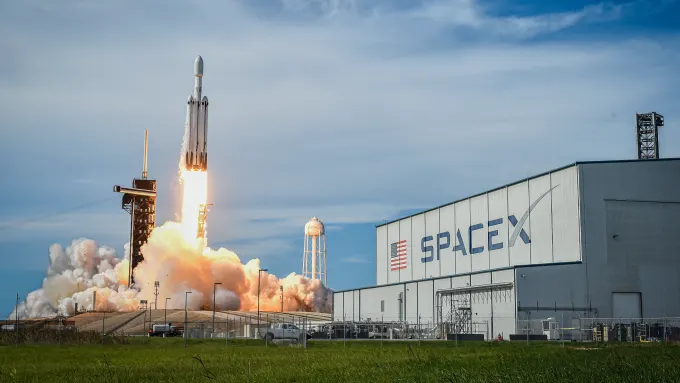
Forecasters will soon have real-time mapping of lightning activity and better monitoring of solar storms, thanks to a new weather satellite. NASA and the National Oceanic and Atmospheric Administration (NOAA) launched the GOES-U satellite on Tuesday, marking a significant advancement in weather observation.
The GOES-U, part of the Geostationary Operational Environmental Satellite U mission, lifted off aboard a SpaceX Falcon Heavy rocket from Kennedy Space Center in Florida at 5:26 p.m. ET. The launch was streamed live on NASA’s website, with weather conditions in Florida being 60% favorable for the launch.
GOES-U is the fourth and final satellite in the Geostationary Operational Environmental Satellites R Series, described by NOAA as “the Western Hemisphere’s most sophisticated weather-observing and environmental-monitoring system.” Ken Graham, director of NOAA’s National Weather Service, emphasized the importance of this series, stating, “The GOES-R series of satellites has been a game changer for us. Since the first launch of the series in 2016, the latest generation of GOES has enabled new and improved forecasts and warning services to help save lives and protect property.”
Once GOES-U reaches geostationary orbit, it will be renamed GOES-19, or GOES East, replacing GOES-16, which was launched in 2016. It will work in tandem with GOES-18, or GOES West, while GOES-16 will become an on-orbit backup. Together, GOES-18 and GOES-19 will collect atmospheric, solar, climatic, and ocean data, covering more than half the globe from the west coast of Africa to New Zealand.
What sets GOES-U apart from its predecessors is its new capability to monitor space weather. As the sun nears solar maximum, expected this year, researchers have observed increasingly intense solar flares and coronal mass ejections. These outbursts can cause geomagnetic storms, affecting communications, the electric power grid, navigation, and satellite operations.
Elsayed Talaat, director of NOAA’s Office of Space Weather Observations, highlighted the satellite’s capabilities: “The Compact Coronagraph-1 on GOES-U will provide continuous observations of the solar corona, allowing NOAA’s Space Weather Prediction Center to issue warnings and watches one to four days in advance. This marks a new chapter in space weather observations.”
Steve Volz, assistant administrator for NOAA’s Satellite and Information Service, noted, “This new instrument will deliver imagery of the sun’s corona to our forecasters at the Space Weather Prediction Center within 30 minutes, compared to the previous time of about eight hours.”
From orbit, GOES-U will monitor weather, climate, and environmental hazards across the Americas, the Caribbean, and the Atlantic Ocean. The satellite’s instruments will capture valuable data on hurricanes, including upper-level wind speeds, specific features about the hurricane’s eye, and lightning activity, aiding in better risk prediction.
Pam Sullivan, director of the GOES-R program for NOAA, explained, “The main camera on GOES-U can zoom in to track dangerous weather and environmental conditions as often as every 30 seconds, enabling better warning systems.”
GOES-U will also identify wildfire risks, monitor fog and low clouds affecting air and sea travel, detect volcanic eruptions, and track atmospheric river events that cause flooding and mudslides. Additionally, it will collect climate data on Earth’s oceans, such as marine heat waves and sea surface temperatures, impacting the marine food chain and coral bleaching events.
With GOES-U’s advanced capabilities, forecasters will have a powerful new tool to provide more accurate and timely warnings, ultimately helping to save lives and protect property.








